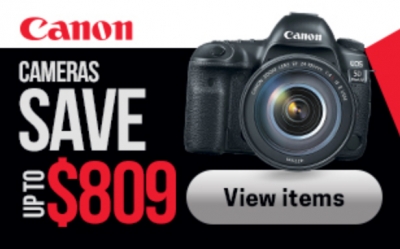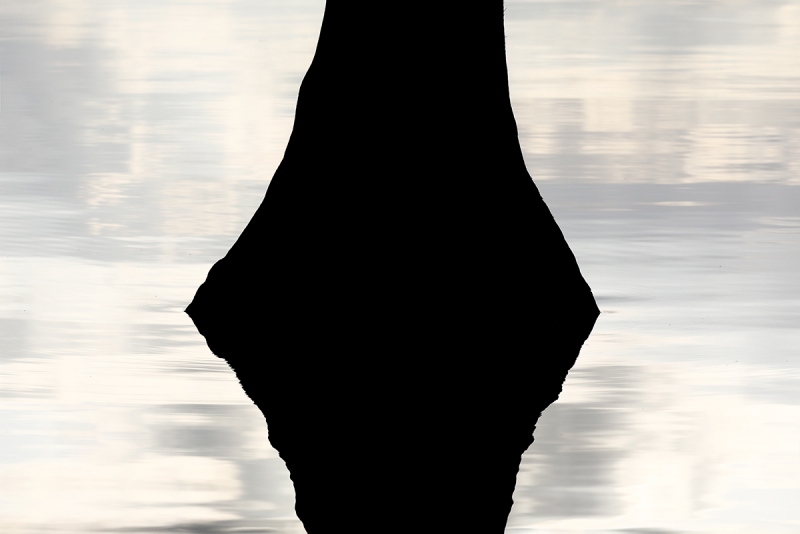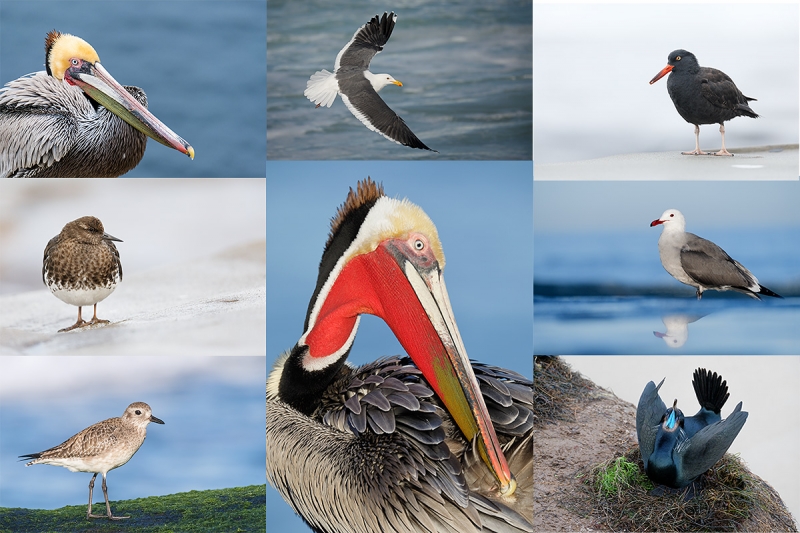Stuff
I spent most of the day on Monday finishing up the 5D Mark IV User’s Guide. It should be in the BAA Online Store some time this morning; you will receive a short notice. It was another cloudy/foggy morning and again I took a walk on a long pier with my 400 DO II/1.4X III/1DX II. Aside from a few flight images of vultures there was not much going on. I swam my regular, slow 3/4 mile (66 lengths of the pool) at 4pm and then headed down to the lake where aside from a few flight images of vultures there was not much going on.
Important Note
More than a few folks over the past few days have sent requests for their free copy of the 5D Mark IV Guide along with their B&H receipts. When I searched my account by their order number, there was no record of the transaction. When I asked them about it, it turned out that either they made a phone order and never mentioned BIRDS AS ART (please remember, web orders only), or that they simply had not used a BAA affiliate link. Please remember to make all of your B&H purchases by starting with the generic Photo Gear and More B&H logo link on the top right of each blog page, or to use a product-specific or to e-mail for one and then click on that. Using these links won’t cost you one penny more and are the best way to thank me for the work that I put into the blog and the time I spend answering your queries via e-mail. Using my Amazon links helps too. All of your efforts are appreciated.
Click on the logo-link above for great holiday savings!
$300 off on the Canon 100-400 II!
$300 off on the Canon 100-400 II!
The Streak
Today makes one hundred fifty days in a row with a new educational blog post! This blog post took about an hour to prepare. With all of my upcoming free time (or not …), the plan right now is to break the current record streak of 480 … Good health and good internet connections and my continuing insanity willing.
Click here for Amazing 5D Mark IV Bundles and Deals
Booking.Com
Booking.Com came through for me twice again recently with both the DeSoto Fall IPT and next July’s UK Puffins, Gannets, and Bempton Pre-trip room reservations. And all the rates were great. If you’d like to give Booking.Com a shot, click here and you will earn a $25 reward. Thanks to the many who have already tried and used this great service.
Gear Questions and Advice
Too many folks attending BAA IPTs and dozens of folks whom I see in the field, and on BPN, are–out of ignorance–using the wrong gear especially when it comes to tripods and more especially, tripod heads… Please know that I am always glad to answer your gear questions via e-mail. Those questions might deal with systems, camera bodies, accessories, and/or lens choices and decisions.
|
|
|
This image was created somewhere with the hand held Canon EF 100-400mm f/4.5-5.6L IS II USM lens (at 400mm) and my favorite abstract photography camera body, the Canon EOS 5D Mark IV. ISO 400. Evaluative metering at zero: 1/500 sec. at f/13 in Manual mode. AWB at 8:19am in mostly sunny conditions. LensAlign/FocusTune micro-adjustment: -5. Center Large Zone AI/Servo/Shutter Button AF was active at the moment of exposure. The system activated an array of four AF points that caught the black thing just below the center. Image #1: What Is It? |
Black and White and Blue and Pewter Abstracts
The two featured images in today’s blog post are of the same subject. If you think that you know exactly what they are, please leave a comment. The two images were created from slightly different vantage points.
Image Questions
With regards to the composition, image design, and background, which image do you find more interesting? Why?
With regards to contrast, which do you prefer, the lower contrast in Image #1 or the higher contrast in Image #2?
|
|
|
This image was created somewhere with the hand held Canon EF 100-400mm f/4.5-5.6L IS II USM lens (at 220mm) and my favorite abstract photography camera body, the Canon EOS 5D Mark IV. ISO 400. Evaluative metering -1 1/3 stops: 1/640 sec. at f/11 in Av mode. AWB at 8:20am in mostly sunny conditions. LensAlign/FocusTune micro-adjustment: extrapolated to -3. One AF point below the center AF point AI Servo/Expand AF as framed. Image #2: What Is It? |
Exposure Questions
Are the exposures for the two images the same or different? How do you know?
If I got the correct exposure at zero EC why did I need to dial in -1 1/3 stops for the second image to come up with the correct exposure?
|
|
2017 in San Diego was a very good year …. |
2018 San Diego 3 1/2-DAY BIRDS AS ART IPT #2: Sunday, JAN 28 thru and including the morning session on Wednesday, JAN 31, 2018 and a free morning session on Saturday, JAN 27: 3 1/2 days (+1/2 free day!): $1699. Limit: 8: Openings: 3.
Meet and Greet at 6:30pm on the evening before the IPT begins; Saturday, Jan 27, 2018.
San Diego IPT #2: Shorter and Less Expensive!
Join me in San Diego near the end of January to photograph the spectacular breeding plumage Brown Pelicans with their fire-engine red and olive green bill pouches; Brandt’s (usually nesting and displaying) and Double-crested Cormorants; breeding plumage Ring-necked Duck; other duck species possible including Lesser Scaup, Redhead, Wood Duck and Surf Scoter; a variety of gulls including Western, California, and the gorgeous Heerman’s, all in full breeding plumage; shorebirds including Marbled Godwit, Whimbrel, Willet, Sanderling and Black-bellied Plover; many others possible including Least, Western, and Spotted Sandpiper, Black and Ruddy Turnstone, Semipalmated Plover, and Surfbird; Harbor Seal (depending on the current regulations) and California Sea Lion; and Bird of Paradise flowers. And as you can see by studying the two IPT cards there are some nice bird-scape and landscape opportunities as well. Please note: formerly dependable, both Wood Duck and Marbled Godwit have been declining at their usual locations for the past two years …
|
San Diego offers a wealth of very attractive natural history subjects. With annual visits spanning more than three decades I have lot of experience there…. |
With gorgeous subjects just sitting there waiting to have their pictures taken, photographing the pelicans on the cliffs is about as easy as nature photography gets. With the winds from the east almost every morning there, is usually some excellent flight photography. And the pelicans are almost always doing something interesting: preening, scratching, bill pouch cleaning, or squabbling. And then there are those crazy head throws that are thought to be a form of intra-flock communication. You can do most of your photography with an 80- or 100-400 lens …
Did I mention that there are wealth of great birds and natural history subjects in San Diego in winter?
|
Though the pelicans will be the stars of the show on this IPT there will be many other handsome and captivating subjects in wonderful settings. |
The San Diego Details
This IPT will include four 3 1/2 hour morning photo sessions, three 2 1/2 hour afternoon photo sessions, three lunches, and after-lunch image review and Photoshop sessions. To ensure early starts, breakfasts will be your responsibility. Dinners are on your own so that we can get some sleep.
A $599 non-refundable deposit is required to hold your slot for this IPT. You can send a check (made out to “Arthur Morris) to us at BIRDS AS ART, PO Box 7245, Indian Lake Estates, FL, 33855. Or call Jim or Jennifer at the office with a credit card at 863-692-0906. Your balance is payable only by check. Please print, complete, and sign the form that is linked to here and shoot it to us along with your deposit check. If you register by phone, please print, complete and sign the form as noted above and either mail it to us or e-mail the scan. If you have any questions, please feel free to contact me via e-mail.
Support the Blog
Please help support my (stupendous) efforts here on the blog by remembering to click on the logo link above each time that you shop Amazon. That would be greatly appreciated. with love, artie
If In Doubt …
If in doubt about using the BAA B&H affiliate link correctly, you can always start your search by clicking here. Please note that the tracking is invisible. Web orders only. Please, however, remember to shoot me your receipt via e-mail.




Please Remember to use my Affiliate Links and to Visit the New BAA Online Store 
To show your appreciation for my continuing efforts here, we ask, as always, that you get in the habit of using my B&H affiliate links on the right side of the blog for all of your photo and electronics purchases. Please check the availability of all photographic accessories in the New BIRDS AS ART Online Store, especially the Mongoose M3.6 tripod head, Wimberley lens plates, Delkin flash cards and accessories, and LensCoat stuff.
As always, we sell only what I have used, have tested, and can depend on. We will not sell you junk. We know what you need to make creating great images easy and fun. And please remember that I am always glad to answer your gear questions via e-mail.
I would of course appreciate your using our B&H affiliate links for all of your major gear, video, and electronic purchases. For the photographic stuff mentioned in the paragraph above, and for everything else in the new store, we, meaning BAA, would of course greatly appreciate your business. Here is a huge thank you to the many who have been using our links on a regular basis and those who will be visiting the New BIRDS AS ART Online Store as well.
Be sure to like and follow BAA on Facebook by clicking on the logo link upper right. Tanks a stack.
Typos
In all blog posts and Bulletins, feel free to e-mail or to leave a comment regarding any typos or errors. Just be right :).




















Hi Artie,
These exposure compensation values are great for testing our understanding of what the camera is doing and what it is telling us. For the two images the exposure is the same. based on Iso ,SS and Aperture. Others have written this up already so no need to repeat it here.
Now the EC value is not something you set in this case. What the Evaluative metering is telling you is this. Its saying the camera thinks you are underexposing the second image by 1 1/3 stops. So although the meter says the first image is exposed even and the second is under, if both exposures are the same then either both are right or both wrong. Both are what the photographer wanted or chose to do. The camera meter can say whatever it likes. It’s just information. You can use it ( to test our understanding) or ignore it.
The reason the meter is saying -1 1/3 stops in image two is because of the large dark part of the frame.
Whats more, if you had had regard for the meter and decided to add that 1 1/3 stop back to the image, it would be totally different. You would have a lot more detail in the tree trunk and a lot more exposure on the water to the point of overexposure.
So, as always it comes down to how you use the information provided by the camera in making your own creative choices.. and for me the EC thing has easily been the most difficult to understand.
Merry christmas and happy new year to you from sunny NZ. No muddy episodes for us here.
I find these very difficult to work thru – you are manipulating 2 variables
ISO stays at 400
first F-stop is F13 (F13 @ 1/500)
2nd F -stop is F11 – A 1/3 stop more light (f11@ 1/640)
First Shutter speed is 1/500
2nd Shutter speed is 1/640 – A 1/3 stop less light
So BOTH exposures are exactly the same by my calculation.
But in the second case you used Av – With A Huge Black object in the middle of the meter – the Sun was out so the meter was accurate.
So to take the Black object down to its “true” blackness- need to dial in -1 1/3 stops from the meter reading.
Is this just a tree in the water?
My guess on what it is….the knee of some type of Crane or Egret.
Doug
Artie: looks like the reflection of a tree trunk in water. I also thought the first was of a cliff. You dialed in – EC in the second because the camera’s meter was giving more weight to the black trunk in the middle, also larger in area, than in the first. You can see by the sky and reflection that the exposures were the same in both. These images aren’t among my favorites of yours and I am having a hard time seeing a difference in contrast between them.
I like first image. Looks to me like a cypress tree and reflection.
I like the layout in #1 a lot more. It leads me to think a lot more about what the shape is, etc. In #1, it looks like the shaded edge of a cliff (i.e. California) with the ocean behind. The second image blows that theory away and makes me not have much of a clue, but I still think a rock, like a pillar.
Just as I like the first image, which gives just enough to make you wonder what it is, I also much prefer the contrast and colors in that image.
The second image is just too abstract to be confusing. At least for my simple brain!
Thanks for the puzzle and Merry Christmas!
Hi Warren, Good stuff. But my simple brain is confused by something you wrote: “The second image is just too abstract to be confusing.”
It seems to me that the more abstract something is the more confusing it would be …
with love, artie
I guess to me, something can be abstract that makes me think and ponder. That’s a good thing. If something is Really abstract (think crazy modern art, splatter paint art, etc.), then it goes from abstract that I enjoy to something that is just TOO confusing and I don’t try to think about what it could be, etc. So, it’s not enjoyable to me at that point. Maybe, I just give up on it!
By the way, I do see the bottom of a cypress tree and its reflection now that someone mentioned it. I would not have seen that in #1, but it is a little more apparent in #2.
Is it the shadowed side of a tree trunk reflecting itself in water? #1 the left half of the trunk? #2 the whole trunk?
The subtle colors in the water are beautiful. But I don’t go for the shapes of the dark objects. I think mostly because they are large.
I get an exposure difference of -2/3 instead of -1 1/3. It looks like about the same ratio of light to black in both images. So is the darker exposure for #2 because meters read predominately on the center (and black is centered in #2) ?